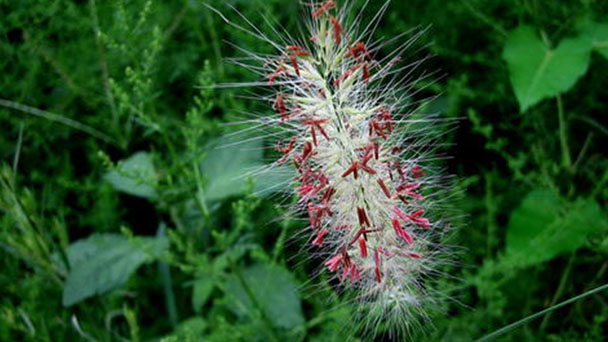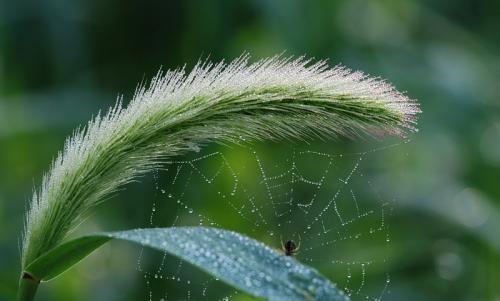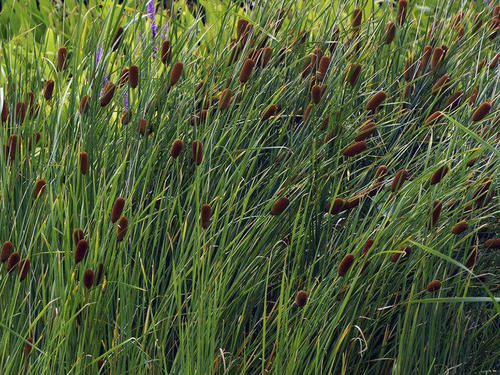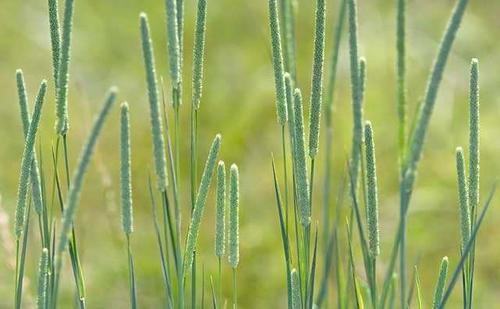Asian foxtail (Uraria crinita) profile
Written by admin
Mar 16 2021

Asian Foxtail is native to the temperate zone of Europe and Asia. Asian foxtail is cultivated in all countries of Europe and America. It was listed as an important forage grass in the former Soviet Union. China's northeast, north, northwest provinces are planted, but the area is small. Asian foxtail is of high feeding value. But it has not been widely adopted. In 1978, the Grassland Task Force of Gansu Province, together with the Minshan Breeding Farm and some forage experts, conducted a comprehensive survey of the pastures, and confirmed that Asian Foxtail was an excellent forage suitable for cultivation. Then organize strength, expand cultivation, propagation and promotion.
Asian foxtail picture

Morphological characteristics of Asian foxtail
Asian Foxtail is a perennial sparse cluster of herbs in the genus asian foxtail of Gramineae. Plant height is 80 ~ 110 cm, up to 120 cm. The fibrous roots are well developed. The stem is erect, internodes are short, 6-7 nodes, lower nodes are more oblique, base 1 ~ 2 nodes are more developed, swelling is spherical. Leaf blade of Asian foxtail is flat slender, smooth glabrous, sharp tip, 10 ~ 30 cm long, 0.3 ~ 0.8 cm wide, leaf sheath loose embrace stem, longer than internode; Ligule is triangular; The auricle is round. Panicles, spikelets compact, columnar, 5 -- 10 cm long; Each spikelet has only one flower. The glume of Asian foxtail is round with a keel, with fuzz on the edge and short awn on the front end; Lemma half of the glume, apical apiculate; Palea is narrow, slightly shorter than lemma. Seeds of Asian foxtail are small, nearly round, easily separated from the glume. A thousand grains weigh only 0.36 grams.
The leaves of Asian foxtail are odd pinnately compound, the lower leaflet of the stem is usually 3, the upper leaflet is 5, rarely 7; Stipules are long triangular, 6-10 mm long, apex slender and acute, base 2 mm wide, margin grayish-white ciliate; Petiole of Asian foxtail is 5.5 -- 15 cm long, gray-white pubescent; Lobular is nearly leathery, oblong, ovoid, lanceolate or ovate, apex lobular 6-15 cm long, 3-8 cm wide, lateral lobule slightly smaller, apex slightly acute, obtuse or rounded, base rounded to slightly cordate, glabrous or above on the midrib slightly gray pubescent, below pubescent along veins, lateral veins 6-9 per side, in the two sides are raised, the following net vein; Stipules of Asian foxtail are narrowly triangular, 5 mm long, 1.5 mm wide at base, sparsely ciliate;Petioles 1-3 mm long, densely pilose.
Racemes of Asian foxtail are terminal, 15-30 cm or longer, stout, densely covered with gray-white hirsute; Bracts are ovate or lanceolate, up to 2 cm wide to 7 mm, striate, white with ciliate hairs; Pedicels ca. are 4 mm, elongating to 10 -- 15 mm after anthesis, curved, covered with short hooked and long white hairs; Calyx of Asian foxtail is shallowly cup-shaped, white hirsute, 5-lobed, upper 2-lobed ca. 3 mm, lower 3-lobed 3.5 mm; Corolla is purple, 6 mm long.
Pod of Asian foxtail is slightly pubescent; Pod nodes 2-4, elliptic, reticulate.
The ecological habits of Asian foxtail
Asian foxtail mostly grows on the slopes of dry wilderness, along roads or in thickets, at an altitude below 850 meters.
Asian foxtails are fond of cold, cool and humid climates and have strong cold resistance. They can safely overwinter in Northeast China, and the overwintering rate is also high in areas with irrigation conditions in Inner Mongolia and Xinjiang. The optimum growth temperature is 16 ~ 21℃.Sensitive to drought and high temperature, not adapted to drought in northwest China (except in areas with irrigation conditions) and summer high temperature in low altitude areas of south China. Asian Foxtail likes moisture and is tolerant to water flooding. It is not strict with soil. Asian foxtail can adapt to various types of soil. Asian Foxtail has a long growth year, usually 6 ~ 7 years, and can be managed for 10 ~ 15 years.

The distribution region of Asian foxtail
Asian Foxtail origin: Europe, West Asia
Invaded place: Hebei, Shandong, Henan, Gansu, Ningxia, Yunnan, etc., born on hills and grassy fields.
Asian foxtail was produced in Fujian, Jiangxi, Guangdong, Hainan, Guangxi, Yunnan and Taiwan provinces.India, Sri Lanka, Indo-China Peninsula, Malay Peninsula, south to northern Australia also have distribution.
Species taxonomy of Asian foxtail
The Asian Foxtail varieties are Bilbo, Tundra and Teno, of which the former two are forage and the latter is lawn.Long-panicle Asian foxtailUraria crinita Dessv. Var. Macrostachya Wall.
The purpose of Asian foxtail
Asian foxtail is suitable for cutting green feed, silage or hay preparation. Asian foxtail can not tolerate livestock trampling, too much grazing use will shorten its life. However, the grassland mixed with alfalfa and red clover can still be used for short-term grazing.
Asian Foxtail is coarse in grass, but it still has high nutritional value and palatability. It is most suitable for mowing and making hay, and is an excellent forage for mules, horses and cattle, but not for sheep. It can be mowed 2 ~ 3 times a year in the northern humid area, and the yield of fresh grass is 3000 ~ 4000 kg per 667 square meters (1 acre). When mowing, the stubble height should be kept at 10 ~ 12 cm.

Latest Updated
- Benefits of Bugleweed - 7 Science-backed Health Benefits
- Bugleweed Dangers & Side Effects - Is It Poisonous?
- How to Plant Evergreen Trees - What You Should Know
- When to Plant Evergreens - Grow Guide for Evergreen Trees
- 12 Wonderful Evergreen Shrubs for Your Garden
- 12 Popular Evergreen Plants with Pictures for Beginners
- When And How To Prune A Lilac Bush Like a Pro
- How to Grow & Care for Lilac Vine (Hardenbergia Violacea)
- Japanese Lilac Tree (Syringa Reticulata) Care & Propagation Guide
- Shumard Oak Pros and Cons - What to Know
Popular Articles
- Winter maintenance of Antirrhinum Majus
- How to Grow Terminalia Mantaly Tree
- How to Grow and Care for Crossostephium Chinense
- How to grow Antirrhinum Majus in spring
- Peristeria Elata (Dove Orchid) Profile: Info & Care Guide
- Underwatered Snake Plant (Sansevieria Trifasciata) - Signs And How To Fix
- How to Care for Brazilian Jasmine Plant (Mandevilla Sanderi)
- How to Grow & Care for Graptopetalum Purple Delight in Summer
- Rosa Chinensis (China Rose): Plant Growing & Care Tips
- How to Care for Baby Sun Rose (Aptenia Cordifolia)